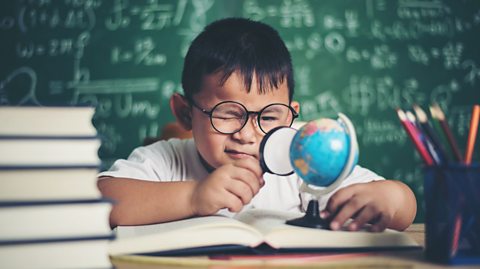It’s that time of year again. New uncomfortable shoes (you’ll wear them in), a new blazer two sizes too big (you’ll grow into it), and a new timetable (double maths… you’re kidding?!).
Whether you’re heading back to school yourself, seeing your kids off for another year, or reminiscing about your own school days, we’re going back to school and back in time to take a look at what school was like more than 70 years ago.
Secondary school for all
Today we accept free primary and secondary education as a given across the UK, but before World War Two this wasn’t the case. In 1938 around 80% of children left school at age 14 and since secondary school wasn’t compulsory there had never been a requirement to abolish school fees.
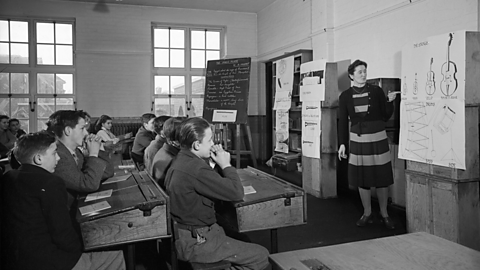
Then in 1944 Rab Butler’s Education Act brought about changes in the provision and governance of secondary schools in England and Wales. The act introduced compulsory education between the ages of 5 and 15, with a clause to raise it to 16, and it prohibited school fees for any school maintained by local education authorities.
The Minister of Education was appointed for the first time and local authorities were given more powers. The act introduced attendance orders for compulsory school age children, medical inspection and treatment of pupils, the duty of providing milk, facilities for recreation, social and physical training, and the provision of transport to and from school.
The former distinction between elementary and higher education was replaced by a new classification of three progressive stages to be known as primary education, secondary education, and further education, that we still use today.
Air-raid sirens and blackouts
But what was it like for children at the time? We spoke to David, now in his eighties, who grew up in Essex.
David should have started school as a five-year-old in 1939 but because of the outbreak of World War Two, air-raid sirens and blackouts made the first few years of his education extremely difficult.
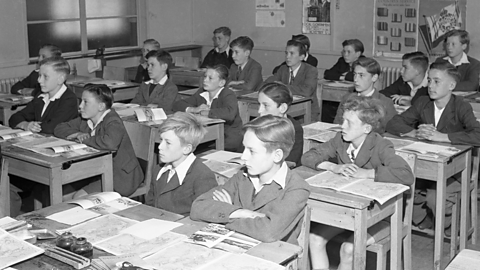
Speaking in 2019, when he was 85, he described his early years of education as “intermittent” and “extremely difficult” because of the interruptions caused by the war. But he assured us everyone did the very best they could, despite the hard conditions:
“Of course, for three hours we did reading, writing and arithmetic, we did geography and history, that was the basics, a good foundation,” he explained.
Today we spend many of our history lessons learning about World War Two, so we asked David what they learnt in history at the time:
“I liked modern history” he said, “but not going back too far. We learnt about the 1800s onward but its been 75 years since I went to school so I suspect it’s moved on.”
A third of a pint of milk
Today school lunches vary from school to school and many children bring packed-lunches from home. With food allergies and other dietary requirements, schools must ensure there are plenty of options, and healthy ones at that.
David went to secondary school in 1945 when they were still on rations. He said there was one thing they could always count on - milk.
“We had a small bottle of milk, a third of a pint, everyday with a straw,” he said.
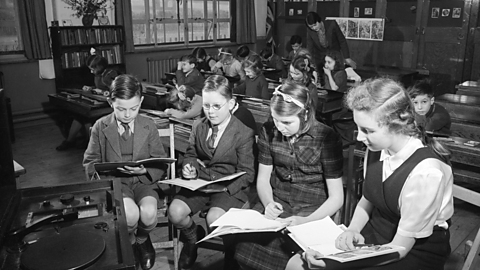
By 1951 he had completed his school education and was doing his final exams. These days school children are under a lot of pressure to get good grades when they leave school. David didn’t think this was a new phenomenon and said everyone got nervous.
Sixty-eight years later and David couldn’t remember his results.
Separate playgrounds
An aspect of education that has changed in the last 75 years is who is allowed to learn what.
David went to a mixed school but it wasn’t like it is today. “There were separate playgrounds and separate areas. It was only some sports and the general assembly that were together.”
David did woodwork and metalwork with the boys and the girls did what he called “domestic sciences,” like needlework.
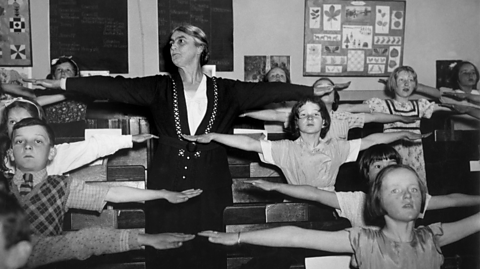
These days we still have single-sex schools and children are often still split up for P.E., but there is more freedom to study what you enjoy no matter your gender.
David also stressed how higher importance was placed on practical skills and making things with your hands, rather than on the more academic subjects.
After 75 years it makes sense for schools to have changed and adapted with new policies, technologies and societal needs. But, the need to educate and to learn isn’t going anywhere.
We have to learn, we’ve got to learn skills, I’m still learning even though I’m an old man! - David, 85.
Quiz: What happened after World War One?
KS2 History
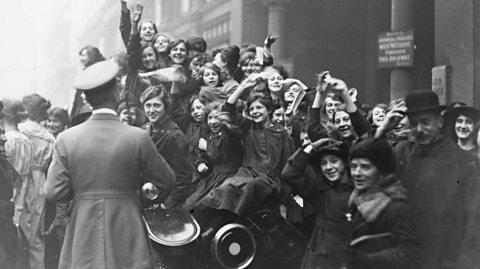
What were classrooms like 100 years ago?
What was school like for children growing up during World War One? Find out more in this KS2 Bitesize Primary guide.
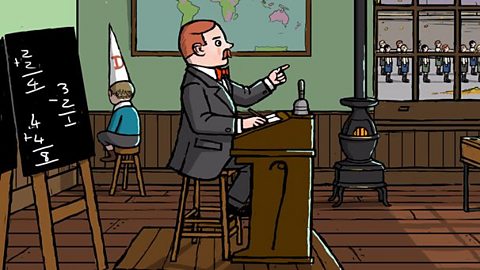
The back-to-school geography quiz
Test your geography knowledge with this back-to-school quiz.
